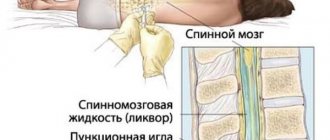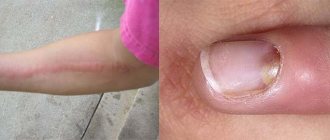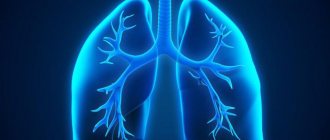Mountain sickness is a painful condition that occurs when climbing to high altitudes. Mountain sickness is a type of altitude sickness that occurs due to oxygen deprivation (hypoxia) when climbing to significant altitudes. A similar condition is familiar to climbers and geologists when climbing to heights or climbing by vehicle. Acosta was the first to describe deterioration of well-being during ascent. The influence of altitude on the human body began to be studied in more detail only in the nineteenth century.
What is altitude sickness? Signs of altitude sickness
As Wikipedia says, mountain sickness is an ailment that occurs when a person rises to a certain height above sea level. It is traditionally believed that climbers and rock climbers suffer from this disease, but this is not entirely true. Any tourist who finds himself in a mountainous area may be susceptible to it. It is especially difficult for an unprepared body to endure ascent to heights.
It’s not for nothing that professional athletes undergo a training course before they begin climbing. It is advisable to begin the fight against mountain sickness when the first signs of the disease appear. If medical intervention does not help, and folk remedies are powerless, the best way out is to stop traveling. Chasing adrenaline at the expense of your own health is not worth such sacrifices.
Altitude sickness
Typically, symptoms of altitude sickness vary depending on the altitude. It all starts with slight dizziness, and if the situation is not corrected, the outcome can be fatal. The first signs of altitude sickness may appear at an altitude of 1 thousand meters. The general condition will be accompanied by dizziness. When you rise higher, up to 2500 meters, your heart rate may increase.
Closer to 3 thousand meters, headaches, joint and muscle pain may begin, and the breathing rhythm will become disrupted. When you reach 5 thousand meters, nausea, vomiting, abdominal pain, apathy and loss of strength will appear. The most severe symptoms occur at an altitude of 7 thousand meters: lips turn blue, temperature rises, bleeding begins from the lungs and nose, and hallucinations begin.
Stages
The development of altitude sickness and the mechanism of manifestation of symptoms are conventionally divided into stages. In many ways, this classification depends on the height of the climb, the physical training of the climber, the time spent at a particular height, the region and even the gender of the climber. For example, a height of 7 km in the Himalayas feels like 5 km on Elbrus. Interestingly, women tolerate hypoxia more easily. Conventionally, altitude climbers divide altitude sickness into the following stages:
- Stage 1. The first symptoms appear. This occurs at a low altitude of 2000-3000 meters. An upset stomach, mood swings, poor sleep, and shortness of breath appear. The climber loses his appetite. If at the end of the day there is a desire to eat all the reserves, it means that acclimatization is occurring. This is a good reaction to height.
- Stage 2. Height – 4-5.5 km. Altitude sickness manifests itself in a throbbing headache, severe nausea, and vomiting. There is forgetfulness, clouding of consciousness, loss of concentration, drowsiness, blurred vision, loss of fluid in the body.
- Stage 3. Height – 5.5-6 km. The headache continues to be tormented, which is not suppressed even by potent analgesics. The vomiting does not stop, but a new symptom is added: cough. The climber loses orientation and coordination of movements.
- Stage 4. Altitude 6 km. Climbing can cause swelling of the brain and lungs. Urgent descent down!
Causes of altitude sickness
Usually the cause of the disease is considered to be a lack of oxygen in the air, but this is not so. In the mountains, the oxygen desaturation of the air decreases, and the atmospheric pressure decreases, and the blood does not have time to be saturated with oxygen, which has a negative effect on the functioning of the brain and other body systems. When rising to a height in a short period of time (1-2 days), a person does not have time to adapt to changing conditions. As a result, mountain sickness develops.
Treatment of high altitude hypoxia
Because acute mountain sickness is potentially life-threatening, do not ignore its signs and symptoms. In the past, people have died from altitude sickness by not understanding the signs or by ignoring them.
If you have very mild altitude hypoxia, continue to climb, but make sure you do so gradually and at a steady speed. Warn your friends and family that you are traveling and how you feel, even if you have mild symptoms.
If the symptoms are a little more pronounced, stay at your current height to allow your body to adjust.
- Do not engage in physical labor or sports.
- Drink plenty of fluids (but not alcohol).
- Do not smoke.
- Rest until you feel better.
Descent to a lower altitude
If altitude sickness occurs, the best treatment is to descend to a lower altitude.
Descending 300 m (1000 ft) will improve symptoms of moderate altitude hypoxia, and spending 24 hours at this lower altitude will significantly improve symptoms.
Symptoms of altitude sickness
Symptoms
As stated earlier, the symptoms of mountain sickness differ at different altitudes. The higher a person rises, the more his condition worsens. If you do not give the body a break of several days at various stages of the ascent, the disease will develop faster. Otherwise, the body will have time to acclimatize, and there will be no serious consequences.
We recommend reading:
Tour operator "Anex Tour"
As for the symptoms, they can be arranged in order of increasing severity for the body.
- Dizziness.
- Cardiopalmus.
- Headache.
- Pain in muscles and joints.
- Breathing rhythm disturbance.
- Nausea, vomiting.
- Internal bleeding: pulmonary, gastric, nasal.
Sleep at altitude
Dreams at altitude are more vivid and vivid than at the bottom. At least for me. Maybe because my sleep is less deep and during the night I can wake up and fall back to sleep three to five times. This is fine.
If you suffer from insomnia, you can take half a tablet of Diamax. You can also take the sleep hormone Melatonin. I don’t recommend regular sleeping pills; there is an opinion that they worsen acclimatization. Some climbers take cinnarizine before bed for headaches.
Another phenomenon that I want to talk about is periodic breathing, the so-called Cheyne-Stokes breathing.
At altitude, we breathe deeply and frequently, causing the concentration of carbon dioxide (CO2) to decrease. Namely, its excess stimulates the respiratory center. When we are awake, our consciousness gives signals to inhale, and when we fall asleep, it stops. As a result, there is no excess CO2 and the inhalation signal is not given. The breath is held for 10-15 seconds, followed by awakening from lack of oxygen and a series of intense breaths. It feels like you are waking up from the fact that you have begun to choke and are trying to breathe. An extremely unpleasant, but not critical phenomenon that happens to many.
Once you have caught your breath, you can continue to sleep peacefully.
Prevention of altitude sickness
To avoid altitude sickness, you must first of all carefully prepare for your future hike. Sports training plays a very important role: novice climbers practice running uphill, running while holding their breath. Taking multivitamins and antioxidants is mandatory. The water-salt balance must be maintained by taking certain medications or drinking salted water.
In general, the amount of water you need to drink when rising is at least three liters. Thus, the metabolism and removal of “oxygen-starved” products from the body will speed up. And if, some time before the ascent, the climber trained his body by inhaling gas mixtures that are poorly enriched with oxygen, this will allow his body to quickly adapt to the mountain environment.
The best prevention, despite all the measures taken, is still considered to be a gradual ascent up the mountain.
If you allow the body to adapt to mountain air without changing the achieved altitude for several days, then mountain sickness may not occur at all or may occur with minimal consequences.
Acclimatization – adaptation of the body to altitude
As soon as the body finds itself in new conditions, it begins to gradually adapt to them. It takes time. In the mountains, like nowhere else, the rule works: “The slower you go, the further you go.” The first important step is to create a proper acclimatization schedule. There are several basic rules:
- At an altitude above 3500 meters, do not gain more than 500 m per day (between overnight stays)
- Take a rest every 1000 m or three days. Moreover, “rest” does not mean sitting still. This means radially gaining altitude and descending to the same place for the night.
- Walk higher - sleep lower. When you arrive at your overnight stay, go for an acclimatization walk. You need to gain about 150-200 meters, spend 20 minutes there and descend. Then you will sleep better.
There is an opinion that acclimatization lasts up to three weeks. But I have exceptions based on personal experience. In November-December 2016, I spent a long time at an altitude above 4000 in Nepal. I went on a trek to Everest, and then an expedition to Mera Peak (6461 m) + Island Peak (6189 m). After that I was at home for two weeks, then trekking in Patagonia for 22 days at low altitudes. A week of rest - and my partner and I went to Aconcagua (6962 m) for the first time. We decided to pass quickly, because a month and a half ago it was also at an altitude above 6000 m. As a result, climbing Aconcagua from the entrance to the national park to the exit took me 7 days. In fact, without acclimatization, with one overnight stay at 5050 and a start from Nido De Condores at 5500. At the same time, my partner was caught during the night at 5050 and I helped him descend to base camp. Why is that? Because in Nepal I spent a long time at altitude and acclimatization remained even after almost two months. My partner was on Chimborazo (6384 m) and there the entire ascent takes three days - such acclimatization disappears very quickly.
The rule works: the longer you stay at altitude, the longer acclimatization lasts.
But, nevertheless, no matter how many eight-thousanders you have experienced, each time you need to acclimatize again. I'm glad that every next time it's a little easier.
How to feel better at your best? Recommendations for everyone
- Drink plenty of fluids . Everyone talks about this and for good reason. At altitude, the body loses water very quickly: you go to the toilet more often, breathe dry air (more moisture is lost with breathing), and sweat from physical activity. If on the plain it is recommended to drink about 2 liters of water per day, then at altitude it should be at least 3, and preferably 4 liters. This can be water, tea, juices and even soups.
- Avoid alcohol, it dries out the body . And, given the point above, you are already dehydrated. During climb and active acclimatization, I categorically do not recommend drinking alcohol. After reaching the goal and starting the descent, you can drink a can of beer.
- Give up coffee . Caffeine raises blood pressure and makes the heart beat faster. At altitude, our heart beats faster than usual and our blood pressure is often elevated. It's better to give up coffee. At the same time, if you are a coffee lover and are used to drinking coffee several times a day, a sudden refusal can have a negative impact. Reduce the amount of coffee to one morning cup.
- Don't freeze and don't sweat . High altitude trekking and mountaineering is the art of disguise. Make sure you are as comfortable as possible. If it's hot, stop and undress, walk slower. It is very important not to sweat too much, because there is a risk of quickly cooling down and getting sick. You shouldn’t freeze, it’s always better to warm yourself. The body spends too much energy to warm itself.
- Walk slowly . Make sure your heart rate is in the range of 110-130 beats/min during the transition. Not more. With a higher heart rate during transitions, you will be excessively tired and will not have time to recover. Of course, on steeper sections your heart rate may rise briefly.
- Use sunscreen and chapstick . Burning in the sun is adding stress to the body, which is already enough
- Get enough rest . Don't stay up until midnight in the evenings, get enough sleep
- Smoke less . If you smoke, we recommend reducing your dose a few weeks before the start of the program and smoking minimally at altitude. Quitting cigarettes completely can be very stressful for a heavy smoker; it is not necessary to do this during the program.
Our task is to minimize the amount of stress and unnecessary stress on the body.
Infographic: Acclimatization. What to do to make it easier to tolerate heights
Treatment of altitude sickness
Medicines
Drug treatment depends on the symptoms, and therefore on the person’s altitude. If it is small, you can get rid of the disease by simply lowering the person down and leaving him there until his body begins to normally perceive the new conditions.
In other cases, intramuscular or intravenous administration of furosemide (Lasix) in an amount of up to 40 mg is practiced. If mountain sickness is accompanied by an infectious cold, it would be advisable to take antibiotics. If it comes to cerebral edema, dexamethasone will help, also intravenously or intramuscularly at a dosage of 8 mg every 4 hours.
Remedies for illness
Folk remedies
Among the tonic folk remedies for mountain sickness, it is recommended to take Eleutherococcus. In the Far East it is very well known as an adaptogen plant. When climbing to a height, it would be good to have with you either a tincture of this plant or some other type of it suitable for consumption. It helps the body restore strength.
Another plant species that can help prevent or alleviate symptoms of altitude sickness is ginkgo. It helps restore blood supply to the heart and brain. The dosage should be calculated based on the percentage of ginko in the extract, but on average it is taken three times a day, 40 mg.
We recommend reading:
Behavior in an emergency
If mountain sickness does strike, ginger, both in the form of a tincture and in crushed form, brewed in hot water, will help a lot. Moreover, you need to take it not only internally: external use in the form of rubbing will also be useful. Cayenne pepper is a well-known oriental seasoning consisting of a mixture of hot chili peppers. It warms up the internal organs and stimulates their work. The cayenne pepper solution is drunk in one gulp, thus causing a kind of shock reaction in the body and forcing it to function more actively.
Pathological anatomy
The pathological anatomy of Mountain Sickness is not strictly specific. In organs and tissues, changes are observed that are observed during death from hypoxia of any nature. In acute and subacute forms of G. b. focal degeneration and hemorrhages in the myocardium and other internal organs, congestion and perivascular hemorrhages in the brain, congestive congestion or pulmonary edema with penistohemorrhagic effusion in the alveoli and bronchi are detected. With chronic G. b. additionally, an increase in the right parts of the heart is detected due to their hypertrophy, sometimes in combination with dilatation and concomitant signs of congestive venous congestion of the organs.
Consequences
Oxygen starvation of the body can lead to failure of some organs or disruption of their functional activity. “Hungry” blood cannot ensure complete saturation of the body’s systems with oxygen. If this disease is noticed at the primary signs, severe consequences can be avoided through timely professional intervention.
If the symptoms of mountain sickness in its initial stages were overlooked, the consequences of its development can be extremely unpleasant. Pulmonary edema may occur, which is the accumulation of light-colored blood plasma in the lung tissues, which fills the lungs more and more with each breath.
The lethal outcome in this case occurs due to the filling of all free cavities of the pulmonary organs with foamed plasma.
Also, a consequence of mountain sickness can be cerebral edema, characterized by the accumulation of fluid in the brain tissue, or snow blindness. In a horizontal position, the patient's condition may worsen due to the fact that venous blood increases its flow into the upper half of the body if it is laid down. Brain swelling can be fatal. The reason for this is compression of the swollen cerebral cortex by the cranial bone.
Author of the publication
offline 2 years
Nika
7
I am interested in hiking and traveling, photography and videography. I have been going hiking since childhood. The whole family went and went - sometimes to the sea, then to the river, to the lake, to the forest. There was a time when we spent a whole month in the forest. We lived in tents and cooked over fires. This is probably why I am still drawn to the forest and, in general, to nature. I travel regularly. About three trips a year for 10-15 days and many 2 and 3 day hikes.
Comments: 0Publications: 668Registration: 10/23/2018
Nika Survival in the wild, Medical assistance, Articles
Pathogenesis
Pathogenesis has not been studied enough. It is known that high-altitude hypoxemia and hypoxia (see) lead (with normal function of vascular and tissue chemoreceptors) to an increase in pulmonary ventilation, an increase in cardiac output and work, an increase in the mass of circulating blood with polycythemia (erythrocytosis and an increase in hemoglobin), which is not always completely compensates for oxygen deficiency in tissues. Significant (at high altitudes) or prolonged hypoxia of organs leads to disruption of their functions, in particular to an increase in the permeability of vascular walls, a decrease in the functional reserves of the liver, kidneys, skeletal muscles, and the appearance of heart failure. In patients with G. b. at medium altitudes, against the background of moderate hyperventilation, a tendency towards metabolic acidosis (see), and at high altitudes - respiratory alkalosis (see). The central place in the pathogenesis of G. b. allocated to hypoxia of the brain, the development of the cut is promoted not only by hypoxemia, but also by a decrease in cerebral blood flow due to hypocapnia developing during hyperventilation (see).
The pathogenesis of high-altitude acute pulmonary edema is not entirely clear, the development of which is promoted not only by physical. load, but also hypothermia. The main role is played, apparently, by disorders of the pulmonary circulation and disturbances in the permeability of capillary and alveolar membranes.
The pathogenesis hron has also been little studied. G. b., in particular the syndrome of primary pulmonary arterial hypertension, which often occurs among mountaineers living at altitudes above 3000 m (M. M. Mirrakhimov). Great importance is attached to reducing adaptive hyperventilation of the lungs (by reducing the sensitivity of vascular chemoreceptors to hypoxemia), which probably leads to hypertension of the pulmonary circulation (see) with hypertrophy of the right heart.
Diagnostics
Not only a specialist, but also every person who climbs should have the ability to recognize the symptoms of hypoxia. Diagnosis is carried out according to clinical indicators. There is a special questionnaire that helps determine the presence of pathological processes.
The presence of headaches, disturbances in the functioning of the digestive system, decreased activity, the presence of sleep problems and decreased activity are taken into account.
Upon examination, a shaky gait is observed, coordination is impaired, the skin acquires a pale, gray, bluish tint. To clarify the diagnosis, the sports doctor does the following:
- Electrocardiography. It will allow you to consider indicators of overload of the right heart, rhythm disturbances, tachycardia, extrasystole, and cardiac conduction failure.
- Pulse oximetry. Determines the degree of hypoxia. If the blood is saturated with oxygen less than 90%, then we can talk about a severe or moderately severe course of the pathological process.
- Physical examination. Methodology for assessing the condition of the victim. When listening to the lungs, wheezing is observed, which will be wet and dry. There is an increase in the frequency of contractions of the heart muscle and a rhythm disturbance.
If the diagnosis is confirmed, the victim should be sent to a nearby medical facility, where he will be examined by a neurologist, therapist and, if necessary, a resuscitator.
Additionally, a computed tomography scan of the respiratory system or x-ray is performed, and tests are taken. Mountain sickness must be differentiated from infectious pathologies, alcohol poisoning, pneumonia and other ailments.









